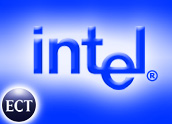
Intel has finally matched its foe AMD in delivering 64-bit silicon solutions to the market in the form of five new Pentium 4 processors. The market, however, may not be ready for the more powerful chips.
Intel said the new desktop chips — a 3.73 GHz P4 Extreme Edition and four new 3.0-3.6 GHz P4s — represented the latest in high-performance processors.
The new P4s support 64-bit memory, Hyper-Threading (HT) and other technologies that enable cutting-edge high-definition video, audio and 3D visualization. But analysts indicated the lack of 64-bit operating systems and applications mean there will be a minimal market for the higher performance.
“It’s more of a marketing thing than it is a market thing,” Gartner research vice president Martin Reynolds told TechNewsWorld. “We’re still not seeing 64-bit operating systems or 64-bit applications, but they can say they’re shipping 64-bit.”
Future Software
Intel, however, said that through its Extended Memory 64 Technology (EM64T), the new 64-bit P4s would provide the platform features required by new, rich media and emerging uses of the desktop PC, such as the latest gaming and high-definition video, as well as business communications.
“As software for the digital home and office matures and becomes more demanding, desktops with EM64T are well-timed to take advantage of emerging new usage models,” said a statement from Rob Crooke, Intel general manager of desktop marketing and strategic planning.
Intel said Microsoft’s Windows XP Professional x64 edition operating system would be supported by its new 64-bit P4s. Brad Goldberg, Microsoft general manager of Windows, said the two companies were working closely to deliver “a robust 64-bit client platform that will help customers realize powerful new 64-bit capabilities while maintaining their investment in 32-bit applications,” according to a statement.
No Longer Laggard
Reynolds said with its latest 64-bit offerings and word that it will soon be making announcements on dual-core processor and Vanderpool virtual system technologies, Intel is making an effort to match the pace set by rival AMD.”They’re no longer appearing a laggard,” he said.
The analyst said that despite the loss of its status as the sole seller of 64-bit, AMD remains in good shape, particularly in terms of the bandwidth benefits of its chip technology.
“They’ve been a strong price-performance player, and this doesn’t change that,” Reynolds said.
The Next Battle
Meta Group Vice President Steve Kleynhans agreed that the hype around 64-bit computing was largely marketing, because the operating systems and applications are still in the emergence stage.
“For the most part, 64-bit support on desktops has been a big selling feature for AMD that they’ve been able to hold over Intel,” Kleynhans told TechNewsWorld. “They had it, Intel didn’t.”
The analyst said since Intel has now leveled the marketing landscape and the 64-bit capabilities are a long way from reaching most users, the 64-bit features will be “dormant.”
“The biggest advantage of 64-bit is the large memory, and the vast majority of users are a long way from tapping all of their current memory,” Kleynhans said. “After this year, the whole 64-bit thing will be behind us. It moves the marketing battle to the next front, which is dual-core.”





















































